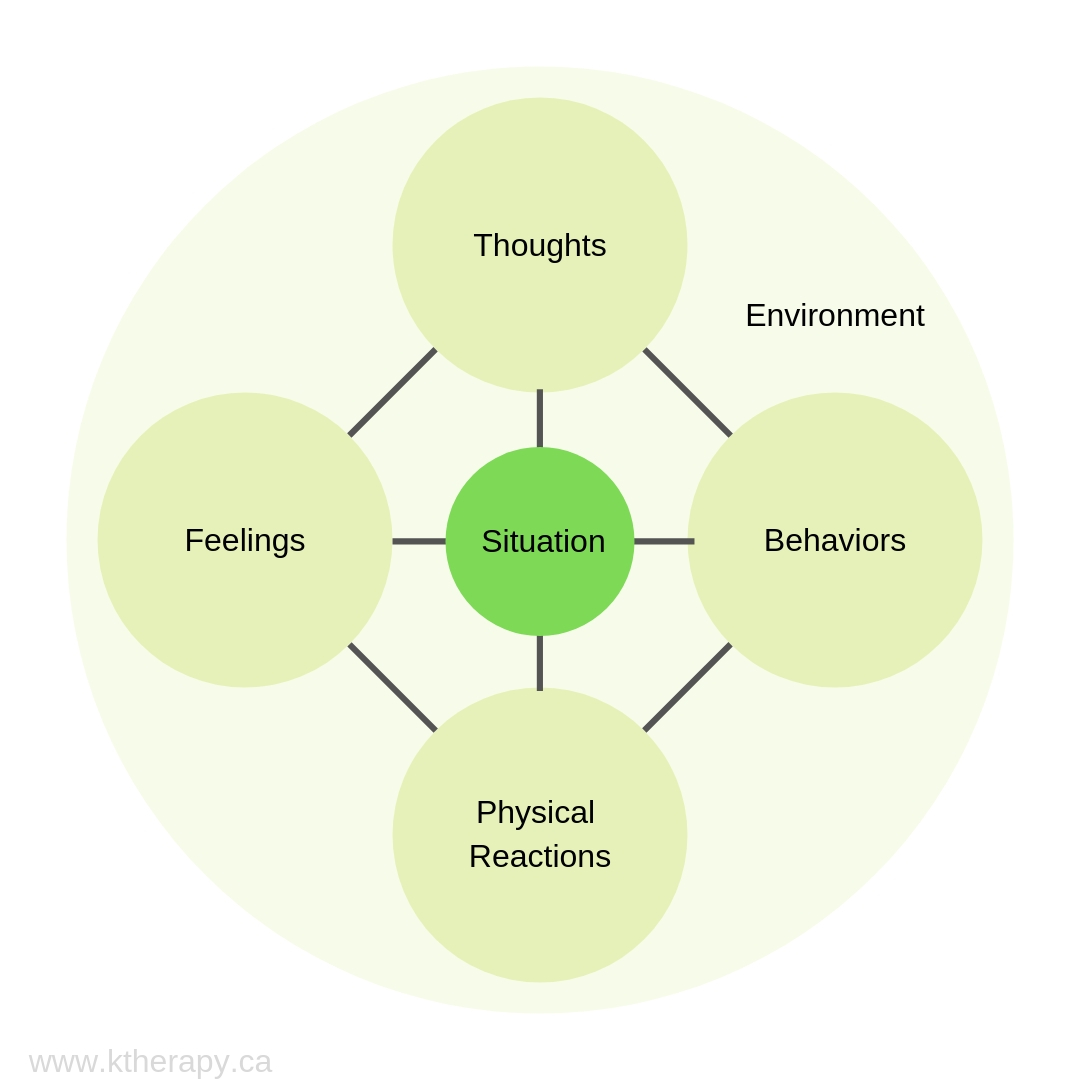One of the modalities I use in sessions with my clients is called Cognitive Behavioral Therapy, or CBT. This is considered the current “gold standard” for treatment when it comes to anxiety and depression because of the high level of effectiveness shown in clinical studies - it isn’t uncommon for clients to reach out to me saying: “My doctor said I should do CBT with someone, but I don’t know what that is. Can you help?”
CBT is an approach that at the core looks at the interconnectedness between our thoughts, our feelings, and our behaviors. Even if as a whole this isn’t a one that will be useful for each client I see, this core piece of looking at thoughts, feelings and behaviors generally is something that each client will benefit from learning about. So let’s talk more about that, and see if maybe we can’t get you starting to apply this piece to your own life after reading this article.
There are a few ways to look at the connection I’m talking about with the most basic one being looking at just your thoughts, your feelings and your behaviors (or actions/in-actions). Some variations expand to include looking at your physical reactions and/or environment as well. All of these aspects impact and connect with each other, as depicted below.
The idea is that if we are aware of the connections between these aspects of an experience (at minimum our thoughts, feelings and behaviors) we can understand how they are influencing each other and reflect on how to impact them for positive change. Let me give you an example:
A young girl is walking down the hallway at school when she notices a group of girls glance at her and start laughing. Worried they are making fun of her she starts to feel tears in her eyes and dashes away.
Using the model we’re discussing here, this is one way we could break this situation down:
Thoughts: “They are making fun of me,” “They don’t like me.”
Feelings: Ashamed, upset, hurt
Behaviors: Dashing away and crying
But are there any other ways to interpret this situation? The only facts we have is that they looked at her, they were laughing, and they were in the hallway at school. So what if instead of that heavy negative worry we tried to focus on a different thought like:
Thoughts: “They are having a good time,” or “Someone must have told a joke.”
Would the feelings still be ashamed, upset and hurt? Maybe, but it’s not as likely. Instead, it might go like this:
Thoughts: “They are having a good time,” or “Someone must have told a joke.”
Feelings: Curious, distracted
Behaviors: Continuing down the hallway as usual
Do you see how these different components are connected? Try thinking of a situation you went through recently that brought up feelings of being upset or anxious. Look at what your thoughts, feelings and behaviors were in that situation, and then look at if there is a different thought that could apply to it and see if that changes your feelings and behaviors.
If you’re interested in continuing to work on your knowledge in this area, check out the book Mind Over Mood, Second Edition: Change How You Feel by Changing the Way You Think.


